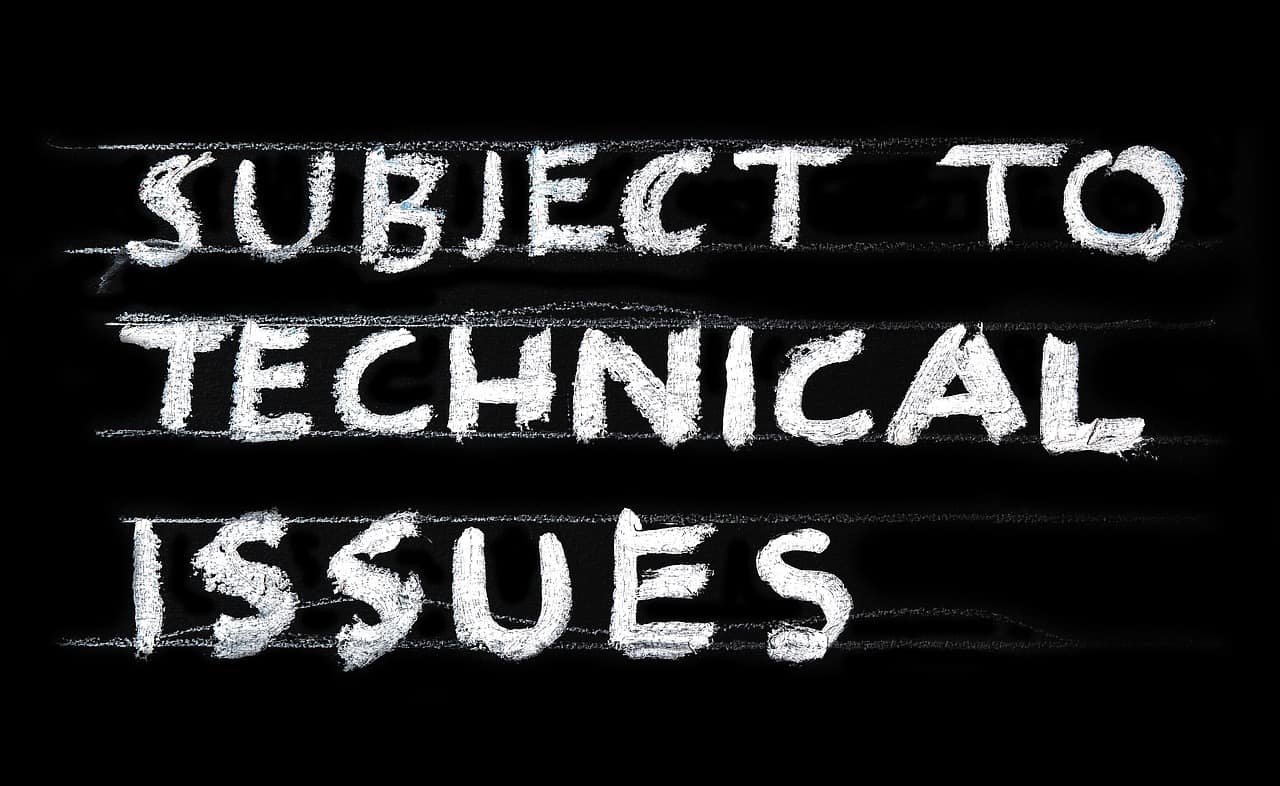Business mistakes happen. Whether it’s a hiccup in service, a product issue, or a decision that missed the mark, every business has faced them. The difference lies in how the response to said mistakes. Handling business mistakes with transparency doesn’t just repair trust; it can strengthen it.
Owning up to missteps doesn’t signal weakness—it shows accountability. Today’s customers and team members value honesty and respect businesses that take responsibility. Companies that address mistakes directly often find that their transparency leads to stronger relationships and better long-term results. Accountability also powerfully communicates your business’s “why” or core values, deepening your connection with your stakeholders.
The Transparency Shift in Modern Business
Transparency has become a critical part of doing business. Customers expect honest, timely communication, especially when something goes wrong. They want to know that businesses are committed to maintaining high standards, even during challenges.
In the past, companies often hid mistakes, assuming they’d harm their reputation. But today’s customers view transparency as a sign of strength. They value brands that admit when they fall short and show they learn from it. With the rise of social media and online reviews, hiding mistakes isn’t just harder—it’s counterproductive.
Why Transparency Resonates Today
- Access to Information: Customers can quickly discover problems through social channels or reviews. Hiding mistakes risks eroding trust.
- Demand for Accountability: Modern audiences respect companies that show integrity and admit to their missteps.
- Opportunities for Connection: Being open about challenges humanizes your business and builds deeper relationships.
Why Owning Mistakes Builds Trust
Taking responsibility for mistakes is a simple yet powerful way to build trust. It shows that your business values honesty, even when it’s uncomfortable. Customers and team members alike appreciate when companies prioritize doing the right thing over protecting their image.
1. It Humanizes Your Brand
Everyone makes mistakes, and admitting them makes your business more relatable. Customers often connect more deeply with brands that show humility and a commitment to improvement.
2. It Signals Integrity
Accountability sends a clear message: your business holds itself to high standards. When you openly acknowledge and address mistakes, you show that trust is a priority.
3. It Strengthens Long-Term Relationship
Whether it’s with customers or team members, trust grows when people see a business take responsibility. This foundation of trust often leads to loyalty, even after a mistake.

Owning Business Mistakes With Transparency
Owning up to mistakes doesn’t just resolve problems—it sets the tone for how your business operates and how customers and team members perceive you. A transparent approach demonstrates accountability and builds trust, turning challenges into opportunities for stronger connections and growth. Here’s how to own business mistakes effectively:
Take Responsibility Early
Acknowledging a mistake quickly shows you value accountability over excuses. When businesses delay or avoid owning up to issues, they risk damaging trust and leaving room for speculation. Instead, address the problem head-on as soon as you’re aware of it.
What This Looks Like in Practice:
- Example: If a shipment delay occurs, notify affected customers immediately with a clear explanation and an expected resolution timeline.
- Tip: Even if you don’t have all the details yet, communicate what you know and assure your audience that updates are coming.
Communicate Clearly and Directly
Clear communication builds credibility. Use straightforward language that avoids jargon or over-complicated explanations. Your audience should immediately understand what happened, why it happened, and what steps you’re taking to resolve it.
Practical Tips:
- Avoid vague phrases like “an unforeseen issue occurred.” Instead, specify what went wrong and take responsibility for the outcome.
- Use an empathetic tone acknowledging the inconvenience or frustration the mistake may have caused.
Example Statement:
“We experienced a technical error that caused delays in processing your order. We take full responsibility for the oversight and are implementing immediate measures to ensure it doesn’t happen again.”
Show Your Commitment to Solutions
Words matter, but actions build trust. After acknowledging a mistake, focus on how you’re resolving it. Provide specific steps to reassure your audience that the issue is being handled with care and urgency.
Steps to Take:
- Explain short-term fixes: Outline immediate actions being taken to mitigate the impact.
- Share long-term solutions: Highlight improvements you’re making to prevent the mistake from recurring.
Example:
For a service disruption, you might say, “Our team has restored functionality, and we are upgrading our system to prevent future interruptions. We’re also introducing a backup process to minimize downtime in the future.”
Keep Your Messaging Consistent Across Channels
Inconsistent communication can confuse your audience and undermine trust. Ensure your message aligns across all platforms, from emails and social media to customer service responses. Consistency reassures your audience that you’re handling the mistake professionally and systematically.
Best Practices:
- Use a unified tone and message for all customer-facing updates.
- Train team members to respond consistently when addressing inquiries related to the mistake.
Involve Your Team
Transparency starts within your organization. When leadership demonstrates accountability, it sets an example for team members to follow. Create an environment where mistakes are seen as opportunities to improve rather than failures to avoid.
How to Encourage Ownership Among Team Members:
- Hold open discussions about what went wrong and how to improve.
- Avoid blaming individuals; focus on addressing systemic issues or process improvements.
- Recognize team members who contribute to solutions, reinforcing a culture of learning and collaboration.
Follow Through on Promises
Trust is built on follow-through. If you commit to addressing a mistake, ensure your actions align with your words. Visible progress is vital to maintaining credibility, whether implementing new systems, providing refunds, or improving processes.
Pro Tip:
Update your audience regularly on the status of resolutions. Even if the process is ongoing, sharing updates reassures customers and team members that you’re actively working toward a solution.
Use Mistakes as Opportunities to Strengthen Relationships
When handled well, business mistakes can deepen trust with customers and team members. Acknowledging and resolving an issue shows that your business values integrity and prioritizes relationships.
Example of Relationship-Building Transparency:
After a product recall, a company might thank affected customers for their patience and offer a discount on future purchases.

Pitfalls to Avoid When Addressing Mistakes
Even with the best intentions, mishandling business mistakes can backfire and damage trust. Transparency is essential, but it must be paired with thoughtful communication and effective action to avoid a PR disaster. Avoid these common pitfalls to ensure your response strengthens rather than weakens relationships with your customers and team members.
Over-Apologizing Without Action
Apologizing is an important first step, but it’s not enough on its own. Excessive or repeated apologies without follow-up actions can come across as insincere and erode trust. People expect more than words—they want to see tangible efforts to correct the mistake.
How to Avoid It:
- Pair every apology with a clear explanation of what you’re doing to fix the issue.
- Be specific about immediate steps and long-term improvements.
Instead of saying, “We’re very sorry this happened,” say, “We take full responsibility for the delay. Here’s what we’re doing now to resolve it and how we’ll prevent it in the future.”
Sharing Irrelevant or Overwhelming Details
Transparency doesn’t mean sharing every piece of information. Some businesses overcompensate by disclosing too much, thinking it demonstrates openness. However, providing unnecessary details or overly complex explanations can confuse your audience and dilute your message. It may also make your business appear disorganized or unprepared.
How to Avoid It:
- Focus on the information that directly impacts your audience.
- Keep your message clear and concise, avoiding technical jargon or unrelated details.
Downplaying the Mistake
Minimizing the significance of a mistake can make your audience feel undervalued or ignored. When businesses frame significant issues as minor, it signals a lack of understanding or empathy for how the mistake affects customers or team members.
How to Avoid It:
- Acknowledge the full impact of the mistake, even if it’s uncomfortable.
- Show empathy and understanding for how it may have inconvenienced or affected others.
Example:
Instead of saying, “This is a small issue that only affected a few customers,” try, “We understand that this issue disrupted your experience, and we take it seriously.”
Failing to Follow Through
Making promises without delivering on them is one of the quickest ways to lose trust. Customers and team members notice when businesses don’t take the actions they committed to, which can damage credibility.
How to Avoid It:
- Ensure that any commitments you make are realistic and achievable.
- Regularly update your audience on the progress of resolutions to demonstrate accountability.
Neglecting Long-Term Solutions
Addressing the immediate problem is important, but failing to address the root cause can lead to repeated mistakes. Customers and team members expect businesses to learn from their errors and implement meaningful changes.
In the rush to resolve an issue, businesses sometimes focus only on short-term fixes and neglect to evaluate their underlying systems or processes.
How to Avoid It:
- Conduct a thorough review of what caused the mistake and implement changes to prevent it from happening again.
- Share your plans for long-term improvements to demonstrate your commitment to high standards.
Example:
If a customer complaint reveals a training gap in your team, address the immediate issue while developing a training program to ensure consistent performance.
Misjudging the Audience’s Sentiment
If your tone or message doesn’t align with how your audience feels about the mistake, it can lead to further frustration or backlash. For example, using overly casual language for a serious issue can make your business appear dismissive.
How to Avoid It:
- Research your audience’s concerns and expectations before crafting your response.
- Tailor your tone to match the situation, showing empathy and professionalism where needed.

Using Business Mistakes as Opportunities for Growth
Mistakes offer valuable opportunities to improve your business. Instead of viewing them as setbacks, treat them as learning experiences that can drive innovation, strengthen relationships, and enhance your processes.
Drive Innovation
Business mistakes often reveal gaps or inefficiencies. Use these insights to rethink your systems or explore new approaches. For example, a product defect might lead to better quality controls or even spark ideas for a new product line.
Strengthen Customer Relationships
Transparency during challenging times can build loyalty. By showing your audience that you value their trust, you demonstrate that you’re committed to fixing issues and improving.
Foster a Culture of Growth
Encourage your team to embrace mistakes as opportunities to learn and grow. Create an environment where team members feel safe acknowledging missteps and contributing to solutions. This approach builds morale and inspires innovation.
Reinforce Your Commitment to Standards
Business mistakes give you a chance to reinforce your dedication to high standards. Share how you use the experience to refine your processes, improve communication, or enhance your products and services.

Building Trust Through Accountability
At 4 Leaf Performance, we understand that navigating challenges is essential to running a business. While uncomfortable, business mistakes provide invaluable opportunities to strengthen your organization, improve processes, and build trust.
Our approach empowers businesses to embrace accountability and turn setbacks into success stories. Whether you’re dealing with operational inefficiencies, customer issues, or team challenges, we offer tailored strategies to help you move forward confidently.
What We Offer:
- Leadership Training: Equip your team with the skills to handle mistakes effectively and foster a culture of accountability.
- Operational Assessments: Identify areas for improvement and implement processes that minimize future errors.
- Customer Relationship Strategies: Build and maintain customer trust through transparent communication and effective issue resolution.
Mistakes don’t define your business—how you respond to them does. Contact us today to learn how we can help you transform challenges into opportunities and achieve lasting success.



